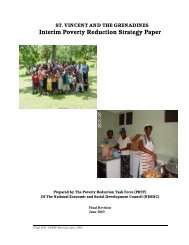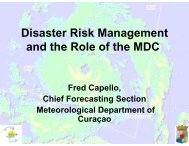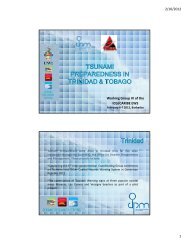The Anatomy of A Silent Crisis The Anatomy of A Silent Crisis
The Anatomy of A Silent Crisis The Anatomy of A Silent Crisis
The Anatomy of A Silent Crisis The Anatomy of A Silent Crisis
- TAGS
- anatomy
- www.bb.undp.org
Create successful ePaper yourself
Turn your PDF publications into a flip-book with our unique Google optimized e-Paper software.
Case Study<br />
<strong>The</strong> human impact <strong>of</strong> climate change – Already serious today 73<br />
Arctic communities — “Canary in<br />
the coalmine” and climate change<br />
adaptation<br />
While global leaders debate how to reduce emissions and some still question if climate change<br />
is real, hundreds <strong>of</strong> thousands <strong>of</strong> indigenous people in the Arctic must draw on ancestral resilience<br />
to adapt to climate change in a rapidly changing world. 238,239 <strong>The</strong> 600 residents <strong>of</strong> Shishmaref located<br />
on a small Alaskan island have witnessed it creep into every aspect <strong>of</strong> daily life, as rising seas and<br />
fierce ocean-based storms have eroded land beneath their homes and ice has become s<strong>of</strong>ter<br />
making every day activities like travel, hunting and fishing perilous. 240,241 Shishmaref residents have<br />
raised awareness <strong>of</strong> their town’s plight, but their predicament is far from unique as nearly 90 percent<br />
<strong>of</strong> Alaska’s 213 indigenous villages could face similar challenges in the near future due to habitual<br />
flooding and erosion. 242 <strong>The</strong> voices from the Arctic sound an early warning <strong>of</strong> larger global changes in<br />
the near future — the canary in the coalmine.<br />
<strong>The</strong> Alaskan government has acknowledged that the impacts <strong>of</strong> climate warming in Alaska are<br />
already felt — including coastal erosion, increased storm effects, sea ice retreat and permafrost melt. 243<br />
A state-wide Climate Change Sub-Cabinet was formed in 2007 to build knowledge and develop<br />
comprehensive adaptation policies. <strong>The</strong> citizens <strong>of</strong> Shishmaref are taking a lead role in adaptation and<br />
have already begun relocation plans as staying on the island has been deemed to be too risky — the cost<br />
is estimated at $180 million. 240 Over 160 additional Alaskan rural communities have been identified to be<br />
at risk <strong>of</strong> serious erosion. 243 Emergency action plans are being developed, shoreline defenses are being<br />
erected, and increased coordination between local, state and national efforts are underway.<br />
<strong>The</strong> interconnectivity <strong>of</strong> man and nature is something that indigenous people have long understood<br />
and a key element <strong>of</strong> successfully adaptation to a rapidly changing environment. For example, as ice<br />
becomes less stable due to a warming climate, traditional dogsleds able to sense when a path is unsafe<br />
may provide a safer alternative to snowmobiles. 244 Indigenous people comprising about 6 percent <strong>of</strong> the<br />
global population thus have a powerful role to play in a warming world as native traditions can provide<br />
useful tools to adapt to climate change. 244<br />
Key Sources: Shishmaref Alaska Erosion and Relocation Coalition, Alaskan government and UNESCO







